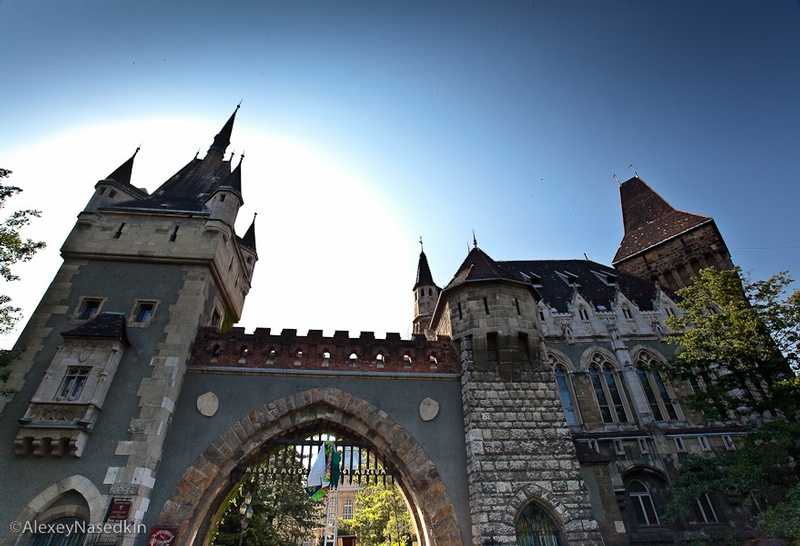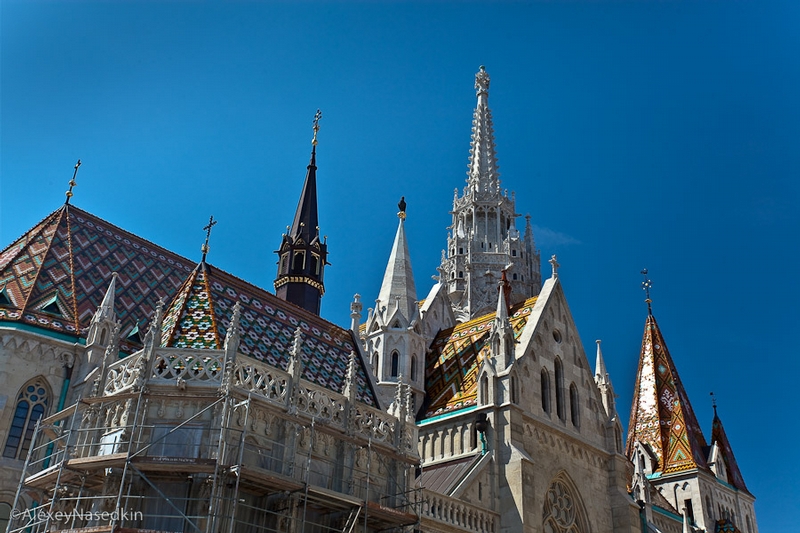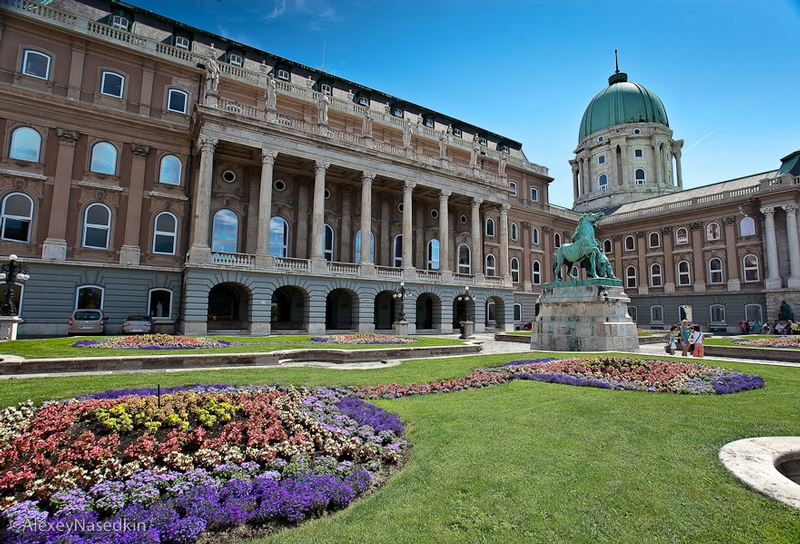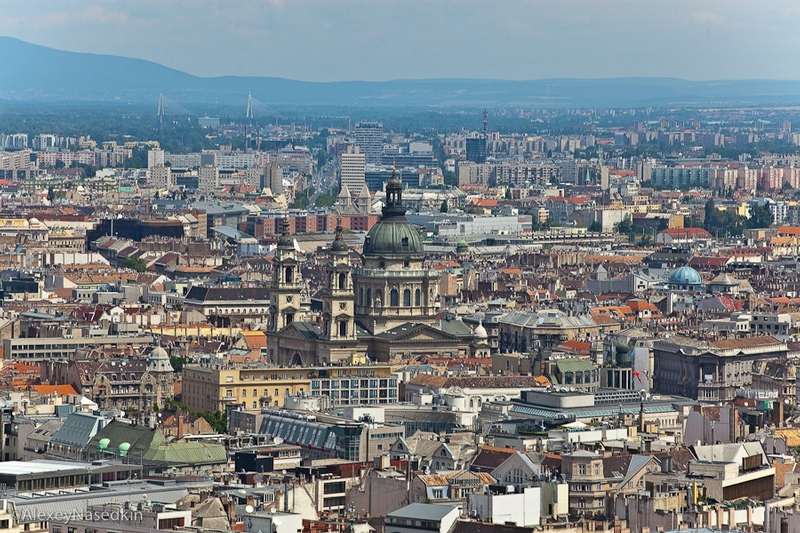Yesterday we went down to mystical caves of Budapest, now let's revisit this wonderful city and see its other sights. Its main square is called in honour of heroes that are major historical figures created the state and played a key role in its development. The central column is devoted to the millennium of the Magyars' transition across the Carpathians. Angel Gabriel stands at the top of the column.

Statues of these heroes, led by Saint Stephan I, inhabit semicircular colonnades along the sides. It was Stephan who turned the country into Christianity.
This is a wreath-laying ceremony to which the highest military Hungarian officials came.
Police controlled the event.

The city park Városliget is located just behind the square.
The Vajdahunyad Castle is interesting at least because no one ever lived in it. Originally it was a wooden stage scenery for performances, and later it became stone.
This baroque building was just an outhouse for the castle. Now it is an agricultural museum.
The park has other interesting objects, like Széchenyi baths or a zoo.
Now let's move to the other side of the Danube river.

The Matthias Church.
Streets of the Buda hill.
Crowds of tourists.

The royal palace.
It really looks very luxurious.
Night roofs of Budapest.
The Budapest metro is the oldest in continental Europe, it was built a little later in London. Here you can see the entrance to the line M1 - the first one.
A plate is almost unseen. The name of the station is written at the top.
A platform appears right after the station entrance.
Here is the oldest line, it is not too technological, or such a visibility for the vintage feel is specially created.
Original design.
A standard underpass.
A solid tram stop.
A bus stop is more modest.
The facade of the central market in all its beauty.
The area is rather big. The market is unique because it is located on three tiers, and one of them is underground.
Famous Hungarian sausages, including salami.
The world of peppers.
An exhibition of mushrooms.
An escalator leading to the lower floor.
The kingdom of seafood is hidden underground.
A second-hand bookshop.
Salted foods.
The market has a very unusual and nice construction.
Váci Street is considered to be an obligatory place to visit in Budapest.
The Citadel Hill.
The rise to the mountain Gellért at an altitude of about 300 m.
The fortress on the hill was built in 1850 to strengthen the country's borders. During WW II it played a defensive role against the Red Army.
From this great height the whole city is perfectly seen.

0 comments:
Post a Comment